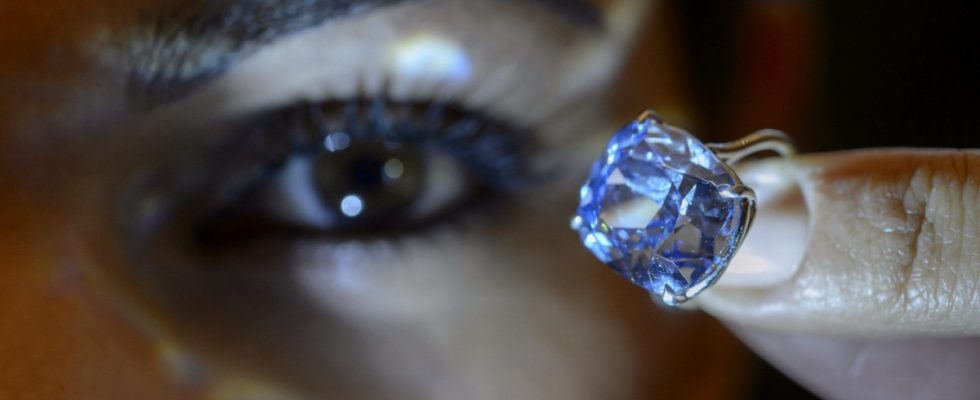Diamonds are a beautiful wedding gift. After all, love should ideally be just as enduring as they are. The good news for lavish wedding guests (or people who just like to treat themselves): The price of natural diamonds has been falling, and has been for months. Some market observers even claim that it is literally in free fall. Market leader De Beers, for example, lowered the prices for some products by 40 percent last year. If you compare the prices on the websites of the popular diamond portals with those from a year ago, you will see the same effect. how come Isn’t the right time to buy a diamond actually always?
Ulrich Freiesleben has been trading in diamonds for 35 years. There was a wedding for gemstones during the pandemic, “now the correction is coming,” says the managing director of Diamondas. According to a study by the management consultancy Bain, demand rose sharply in 2021 because luxury travel was hardly possible, but people wanted to spend their money on luxury. According to Freiesleben, it is completely normal for this boom to flatten out at some point. The US Magazine forbes already anticipated this development in 2021. But the now extremely reduced prices suggest that the falling demand for rough diamonds also plays a role. And the new competitor has already been identified: diamonds from the laboratory have been booming for a few years.
Lab diamonds, called synthetic diamonds in the industry, are not fake diamonds. From a purely chemical point of view, they correspond to natural diamonds, because the natural circumstances of their formation are imitated in various ways during production. What the carbon compounds experience under heat and pressure in the earth’s interior is simulated in the laboratory or in industrial plants. The product is a stone that can be cut and worked in the same way as natural rough diamonds.
Synthetic diamonds have never seen a mine from the inside, making them socially attractive to many. From a climate point of view, however, not necessarily: the production consumes a lot of energy. But one argument in particular prevails for many customers: laboratory diamonds are significantly cheaper than natural diamonds. Analyst Paul Ziminsky has been observing diamond price developments for a long time. The cost of synthetic diamonds has been falling rapidly since 2016 and will likely continue to do so, he says. In August 2023, a normal one-carat diamond from a natural source costs $5,185 and $1,425 for a synthetic one, according to the Quartz news portal. Laboratory stone manufacturers’ sales have multiplied in recent years, from $700 million in 2016 to $14.6 billion so far in 2023.
Rather complicated as an investment
The synthetic stone is now entering the market worldwide, with a market share of 12.1 percent in 2022. There are no valid figures for Germany, says Joachim Dünkelmann, Managing Director of the Federal Association of Jewellers, Jewelery and Watch Shops. “Synthetic diamonds still play a subordinate role in Germany, their share on the German market cannot yet be reliably measured.” But global developments show that laboratory diamonds are booming. For this reason, Iris Arnold founded the company Novita Diamonds a year and a half ago. The company sells laboratory diamonds and also sees opportunities in Germany. “We assume that laboratory diamonds will account for up to 15 percent of the German market,” says Arnold.
Dünkelmann also confirms that the German market for synthetic diamonds will grow. “We expressly welcome the new market segment,” he clarifies. “But it’s important to tell the customer what he’s getting.” The distinction between synthetic and natural diamonds also plays a role in value investing. The fact that there are only a finite number of natural diamonds on the market drives up their value. Carbon per se, on the other hand, is not a rarity, so neither are synthetic diamonds. As long as the production becomes cheaper and cheaper, synthetic stones are not worth investing in. Dünkelmann says that retailers are also still careful with the laboratory goods. However, according to entrepreneur Iris Arnold, a low price could be looming in the production of synthetic diamonds: “The technology is improving, but fixed costs such as electricity, salaries and machines remain.”
It remains to be seen whether the price of diamonds will continue to fall and whether synthetic diamonds will even replace natural gemstones one day. In any case, according to analyst Paul Ziminsky, the markets for natural and synthetic diamonds are unlikely to balance out. Instead, synthetic diamonds are used more for fashion purposes, while natural diamonds will increase in value over time. In general, however, diamonds are more of a complicated investment. For many, they are probably better off in a ring.

